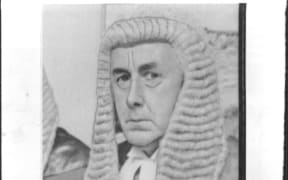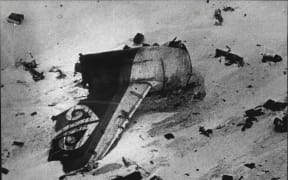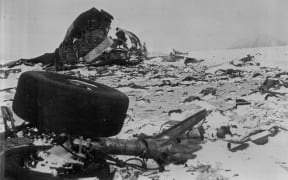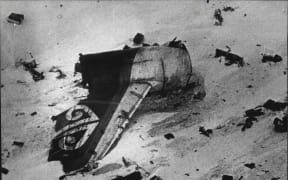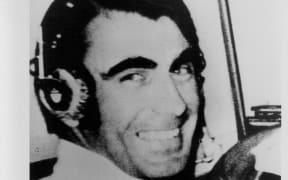This story is part of White Silence, a six-part podcast series from Stuff and RNZ to mark the 40th anniversary of the Erebus disaster. You can listen to White Silence on RNZ, Stuff, or via Apple Podcasts, Spotify, Stitcher, or any other app using the RSS feed. The episodes will be released daily from Friday, 8 November.
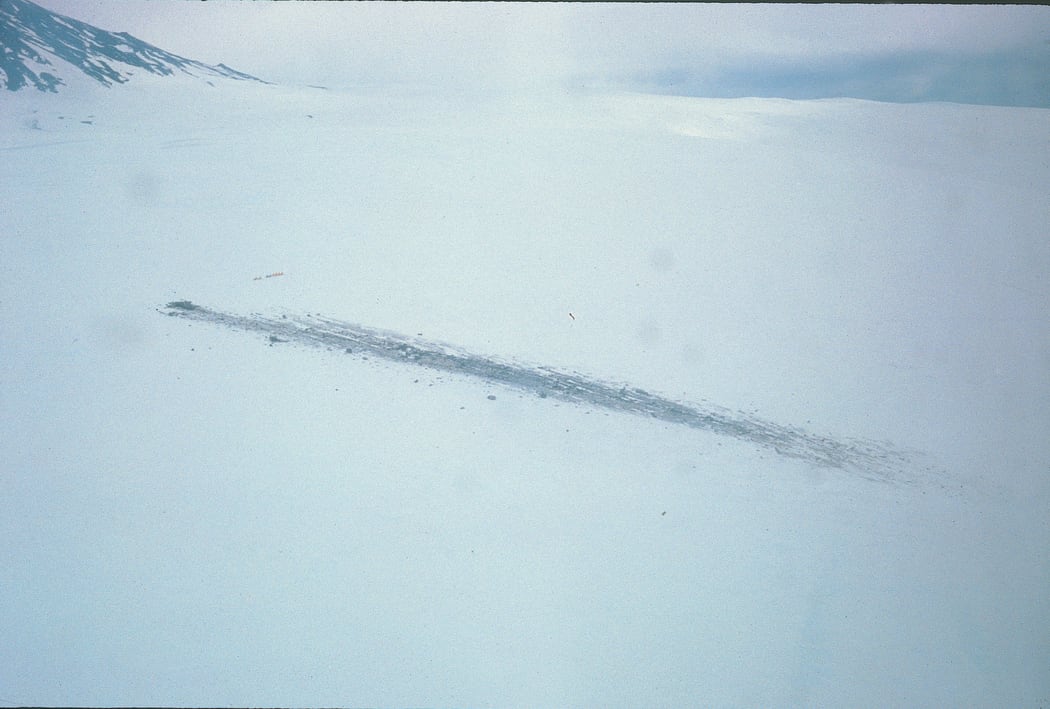
A view over the Erebus crash site not long after the disaster. At the left and above the trail of debris is a row of tents - from the crew who arrived in the aftermath - giving sense of scale to the scene. Photo: Robert Baden Thomson / Antarctica New Zealand Pictorial Collection
Four decades ago 257 people on board an Air New Zealand scenic flight over Antarctica lost their lives after the DC-10 aircraft they were on crashed into the side of Mount Erebus. As painful as the tragedy was for their loved ones, valuable lessons were learnt from the disaster and flying has become safer as a result. John Anthony of Stuff.co.nz looks at how the aviation industry responded to the Erebus disaster.
Every time you step on a plane the legacy of the Erebus disaster is helping keep you safe.
The ill-fated Air New Zealand flight which crashed into the side of Antarctica's Mount Erebus on 28 November, 1979, instantly killed all 257 crew and passengers on board.
It was the fourth worst aviation disaster the world had seen at the time and is still the worst disaster in New Zealand's history.
"The echo of Erebus is quite a big one," says Kathryn Carter, who lost her father captain Jim Collins in the crash.
She said the high death toll and traumatic task faced by the recovery crew meant the pain of Erebus was felt throughout New Zealand.
It's difficult to see how any silver lining could be drawn from such a dark day in our nation's history but Carter says there are positives - there has to be in order to honour the lives that were lost.
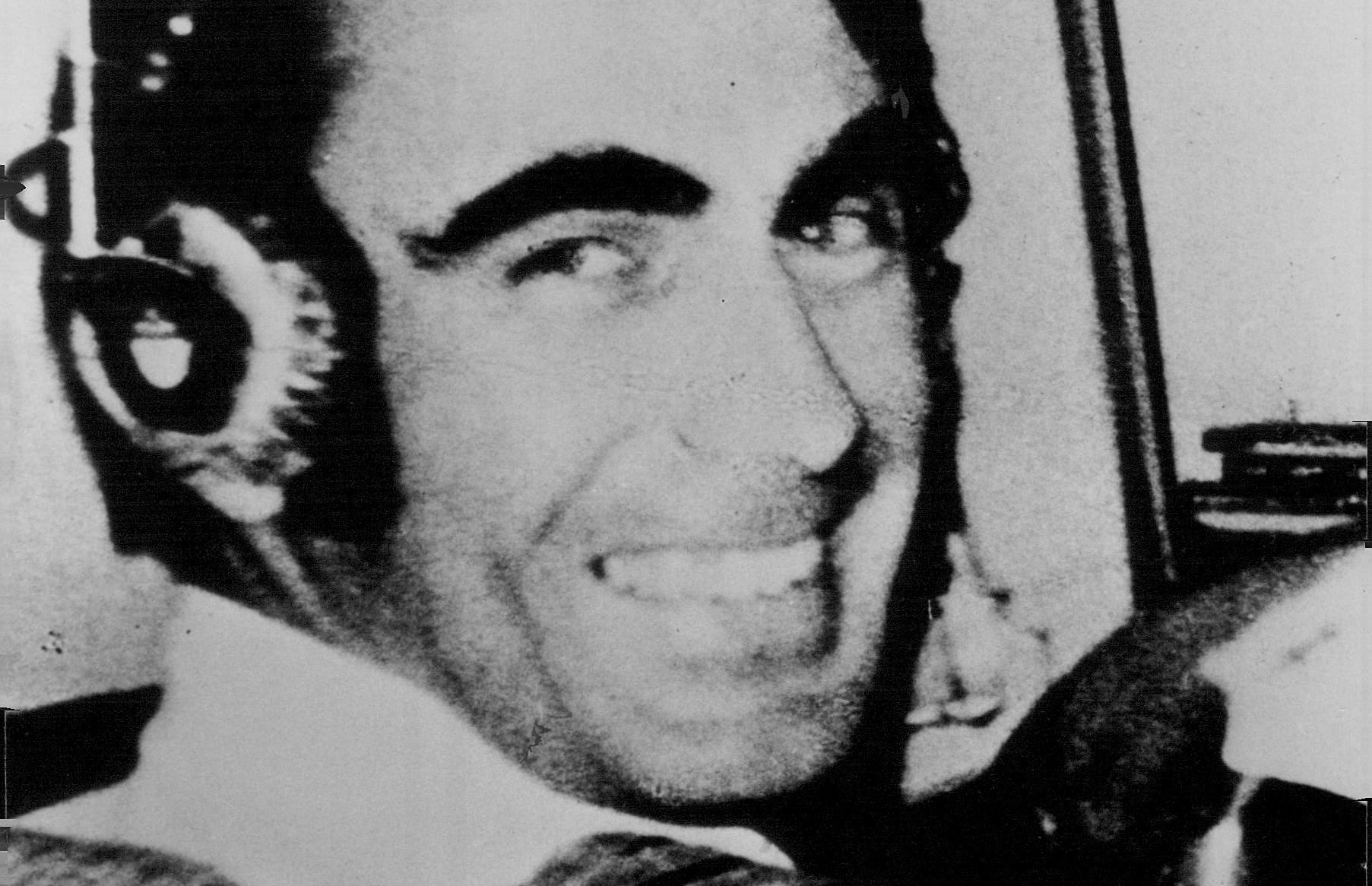
Captain Jim Collins. Photo: Fairfax Media NZ
"In times of great tragedy there's got to be learning from it.
"If you get on a plane tomorrow to fly to Wellington you're safer because of that accident."
Mrs Carter says international pilots recognise the sacrifice of the crew and passengers who died in Erebus and how the tragedy led to a safer aviation industry.
New Zealand Airline Pilots Association president Andrew Ridling says the Erebus disaster was a catalyst for vast improvement of one particular piece of technology that would change the face of aviation.
Ground Proximity Warning Systems is a mapping system built into aircraft to alert pilots if they are in immediate danger of flying into the ground.
"That's probably the biggest outcome from incidents or accidents like Erebus."
Ridling, who has been an Air New Zealand pilot for nearly 30 years, says the Erebus disaster made Air New Zealand the airline it is today.
"That one incident has shaped the modern Air New Zealand," Ridling says.
"A lot of lessons came out of Erebus. They were learnt and they were put in place," he says.
''One key lesson was improved training for pilots on the ports they were flying to.
"All airports we go to now we have to do a route and aerodrome qualification.
"That was a specific Air New Zealand change that came directly out of Erebus."
It would be very difficult for Erebus to happen today thanks to advancements in aviation technology, training and procedures, Mr Ridling said.
Waypoint inputs, which are the points on a map that a route must go through, are also a completely different process today, he says.
"Back then it was all manual. It's a very old technology compared to today."
Now at Air New Zealand they are uploaded automatically and checked three times by pilots before and during take off, he says.
Air New Zealand is particularly strict on pilots checking waypoints compared to other airlines, he says.
"It's a process that was probably born out of Erebus."
He says the Erebus disaster taught the aviation sector and pilots a great deal about whiteout - an atmospheric effect which results in loss of depth perception, common in polar regions.
Retired Air New Zealand pilot Allan Boyce was rostered on as the relief pilot for the Erebus flight.
He says the most valuable lesson learnt from the disaster is a concept called "systemic error", used to explain how a system can go wrong.
Mr Boyce, who joined Air New Zealand in 1974 and left in 2016, says systemic error has been likened to a stack of swiss cheese.
"If the holes line up you can have a series of little incidents that ends up in an accident," Mr Boyce says.
Pilots now understand that an accident doesn't happen by itself, there's generally a chain of little things that cause the accident, he says.
"The system fails rather than the guy at the coalface who gets in the wrong place at the right time."
The other key lesson learnt from the Erebus disaster was an enhanced understanding of a concept called sector whiteout.
"The view that the eyes can deceive you was not fully understood."
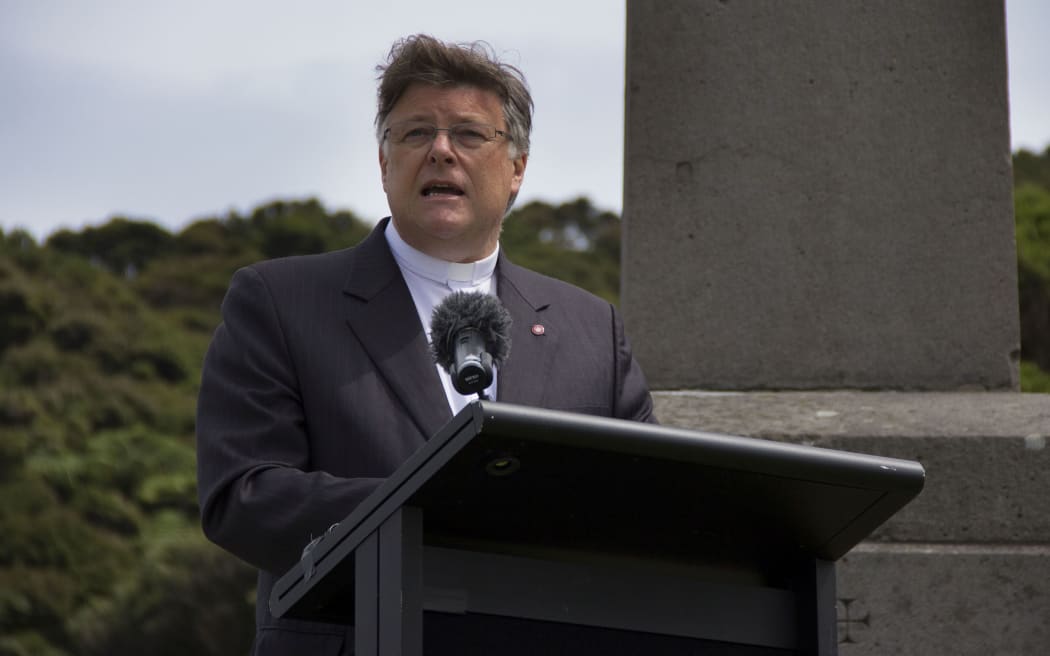
Aviation historian Reverend Dr Richard Waugh. Photo: Supplied
Aviation historian, Reverend Dr Richard Waugh, who successfully campaigned for a national memorial for the Erebus victims, wrote a book on New Zealand air accidents.
In it Dr Waugh says a Royal Commission of Inquiry into the Erebus disaster, presided over by Justice Peter Mahon, resulted in a report that led to ground breaking work on organisational failure and human factor science.
As a result air crash investigators now looked at more comprehensive systemic failures as opposed to apportioning blame.
A 1980 air accident report on the Erebus tragedy by chief inspector of air accidents Ron Chippindale blamed pilot error as the root cause of the Erebus crash.
However, the Mahon report, which came out shortly after, lay the blame of the accident on organisational failures at Air New Zealand.
Parts of the Mahon report claiming Air NZ conspired to deceive the commission were successfully legally challenged.
"Unnecessary controversy, and the problematic judgement of the Privy Council which it should be noted did not challenge the Royal Commission's finding on accident causes, inhibited for a number of years the ability of safety professionals to openly promulgate learnings from the Erebus accident," Dr Waugh says.
Aviation consultant Irene King joined the airline seven years after the Erebus disaster.
"When I joined Air New Zealand in 1986 the legacy of Erebus was a very, very sharp pain in the hearts of many Air New Zealanders who were working at the time," Ms King says.
She says following the Erebus disaster crew resource management (CRM) was developed after safety investigators and psychologists came together to understand how human performance can deliver an enhanced level of safety.
"It's one of the most significant flight safety gains post Erebus"
CRM is the management of all crew resources to achieve a better safety outcome than crew acting independently, she says.
"It's about having more information about the flight being shared across the crew."
First used by United Airlines in 1981 the programme is now universally applied in all air transport operations around the globe, she says.
Air New Zealand was an early adopter of the programme, she says.
"It was the end of the command and control environment that had dominated."
Ms King says before the Erebus disaster pilots were the only ones who could call the shots and there was little tolerance for other crew voicing their concerns or asking questions.
Following the Erebus disaster flight crew were trained to speak out if they saw that something was not right, she says.
"They could speak out without fear. If you didn't speak out you were part of the problem."
The authoritarian culture that had existed at the airline was largely a result of a large contingency of ex-military men working at the company, she said.
"You had a dominant ex-military workforce right through Air New Zealand."
Post-Erebus any regime that existed within flight crews was removed and everyone was treated as equals, she says.
"Sure you have a pilot in command but everyone is equal in terms of their responsibility."
Understanding automation was another important area of improvement and training for the airline.
"You could not just rely on what you were being told. You had to inquire and if you didn't understand something you had to speak up."
This story is part of White Silence, a six-part podcast series from Stuff and RNZ to mark the 40th anniversary of the Erebus disaster. You can listen to White Silence on RNZ, Stuff, or via Apple Podcasts, Spotify, Stitcher, or any other app using the RSS feed. The episodes will be released daily from Friday, 8 November.
